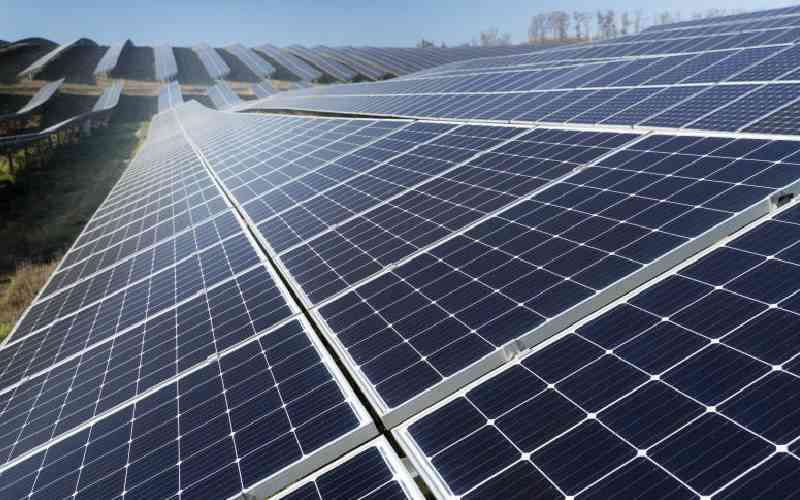When Cadbury Kenya and Eveready East Africa earlier this month announced that they were closing shop and laying off a total of 400 employees, few players in Kenya’s manufacturing industry were surprised.
The country’s business environment is far from ideal. Kenya has a global ranking of 122 out of 189 economies in the World Bank’s Ease of Doing Business Index.
Between 2013 and 2014, the country registered a drop in seven out of the 10 indicators used to measure the ease of doing business, including starting a business, getting a business permit, getting credit and protecting investors.
One area where the country has traditionally performed dismally is access to affordable energy. Globally, Kenya ranks 166th out of 189 economies in the ease of getting electricity, performing worse than Rwanda, Tanzania and it is even below the regional average of 135.
Power outages
The World Bank reports that connecting a new warehouse in Kenya to the national electricity grid requires an average of six procedures and 158 days at a cost of 1,090.7 per cent of income per capita, excluding value added tax (VAT).
And once connected to the national grid, the supply and consistency of power has also been found to be wanting.
A report commissioned by the Kenya Private Sector Alliance (Kepsa) and conducted by global think tank Dalberg, further states that power outages cost Kenya 7 per cent of total sales revenue, 2 per cent of gross domestic product (GDP), and 1.5 per cent of annual GDP growth.
Of all monthly power blackouts, distribution problems and grid inefficiencies are to blame 97.6 per cent of the time, as opposed to other causes like storms and accidents, the report added.
Through the Kenya Association of Manufacturers (KAM) and Kepsa, manufacturers have repeatedly called on the Energy ministry and Energy Regulatory Commission (ERC) to hasten the development of the country’s installed capacity.
The Government is working to increase Kenya’s installed capacity to match the country’s rapidly growing manufacturing, construction and service sectors. Two weeks ago, the national grid got an additional 140 megawatts of geothermal power, which is expected to reduce the cost of electricity by 30 per cent.
According to the Kenya National Bureau of Statistics (KNBS), Kenya’s total installed capacity increased from 1,606.1 MW in 2012 to 1,717.8 MW last year.
Total electricity generation expanded by 7.6 per cent from 7,851.3 Gigawatt hours (GWh) in 2012 to 8,447.9 GWh in 2013, with 53 per cent of this being generated through hydroelectric power.
Total generation from geothermal plants rose to 1,488.0 GWh in 2013.
The overall goal of the Government is to move away from traditional hydroelectric power supply and into more renewable sources of energy.
Stay informed. Subscribe to our newsletter
Of the 5,000 megawatts of energy it hopes to instal over the next three years, more than half is expected to be from wind, solar and geothermal generation sources.
This ambitious strategy will also see the country develop a nuclear power-generating facility that has the capacity to generate 1,000 MW.
Despite being launched just a year after an earthquake led to the destruction of three nuclear reactors in Japan’s Fukushima I Nuclear Power Plant, Kenya’s nuclear power development project is steadily gathering steam, and the Government is determined to execute the project.
The estimated cost of the project is Sh250 billion. The country is partnering with South Korea, which is currently providing high-level training for 11 Kenyans who will become the country’s first nuclear scientists to provide the much-needed expertise once the project goes live in 2022.
Nuclear science
The University of Nairobi is also currently training 28 students sponsored by the Kenya Nuclear Electricity Board (KNEB) for an MSc in nuclear science at its new Institute of Nuclear Science and Technology.
In tandem with the nuclear power project is one that involves tapping into more than 10,000 MW capacity from the Rift Valley’s fault system.
When President Uhuru Kenyatta commissioned the 140 MW Olkaria IV Geothermal Power Plant, the Government stated it was the largest facility of its kind in the world.
“This new plant will bring down the cost of electricity and going towards the end of the year, we expect to see a reduction of up to 30 per cent in the cost of power,” said the President.
National power-generating company KenGen added that shifting power generation sources from hydroelectricity to renewable energy would lower production costs, with the savings transferred to consumers.
According to Albert Mugo, the managing director of KenGen, the bulk of these savings will be realised in fuel, which accounts for a large percentage of power-generating costs.
“Generating power from heavy fuel oil [HVO] costs about Sh16 per Kilowatt hour,” he said. “Generating the same from geothermal costs Sh6 per Kilowatt hour and with the new facility the President just commissioned, we project that we can save up to Sh11 billion each year.”
Urgent need
However, for some companies, the urgent need for low-cost energy and renewable solutions means they cannot afford the luxury of time.
Safaricom, which has thousands of centres that help process and execute voice and data demands for the company’s 21 million subscribers, is moving towards solar energy to help reduce production costs.
“Energy is a huge cost for us because our data centres demand and consume so much energy each day, and conventional electricity alone cannot meet this demand,” said Bob Collymore, the company’s chief executive.
The company is going to instal solar units for 100 of its data sites in the next financial year, with Mr Collymore adding this could be indicative of shifting trends in sustainable energy solutions in the country’s energy sector.
“We have a target of reducing our energy costs by 10 per cent over the next year, and one way we are doing this is by exploring alternative energy solutions like wind and solar,” he said.
[email protected]
 The Standard Group Plc is a
multi-media organization with investments in media platforms spanning newspaper
print operations, television, radio broadcasting, digital and online services. The
Standard Group is recognized as a leading multi-media house in Kenya with a key
influence in matters of national and international interest.
The Standard Group Plc is a
multi-media organization with investments in media platforms spanning newspaper
print operations, television, radio broadcasting, digital and online services. The
Standard Group is recognized as a leading multi-media house in Kenya with a key
influence in matters of national and international interest.
 The Standard Group Plc is a
multi-media organization with investments in media platforms spanning newspaper
print operations, television, radio broadcasting, digital and online services. The
Standard Group is recognized as a leading multi-media house in Kenya with a key
influence in matters of national and international interest.
The Standard Group Plc is a
multi-media organization with investments in media platforms spanning newspaper
print operations, television, radio broadcasting, digital and online services. The
Standard Group is recognized as a leading multi-media house in Kenya with a key
influence in matters of national and international interest.









